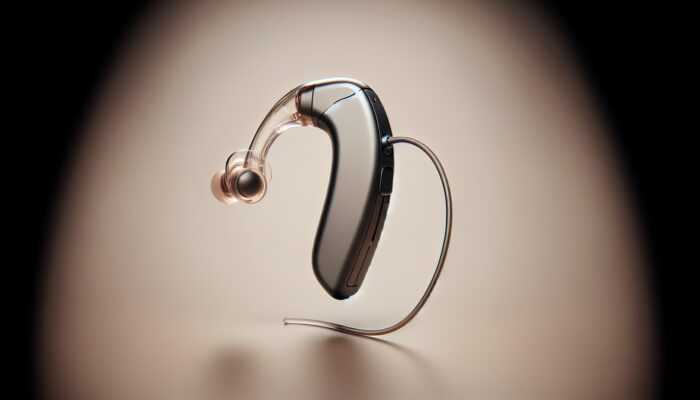Hearing Aid Trials: Essential Tips for Success
Last Updated on 24/05/2025 by Admin
Enhancing Auditory Health: The Critical Importance of Hearing Aid Trials
Understanding Hearing Aid Trials for Maximum User Satisfaction
Hearing aid trials provide a vital opportunity for individuals experiencing hearing loss to test and assess various devices prior to making a financial investment. This trial phase is instrumental in enabling users to pinpoint the most appropriate hearing aids that not only meet their unique physiological requirements but also align with their lifestyle preferences. By utilising different models in everyday situations, users can experience firsthand the full spectrum of a hearing aid’s functionalities, including sound clarity, comfort, and usability in diverse environments. This comprehensive approach ensures that selections are informed and tailored specifically to individual needs.
The significance of hearing aid trials extends beyond the mere act of testing a device; it represents a thorough evaluation process aimed at understanding personal auditory requirements. Whether faced with the cacophony of urban life or the serene surroundings of home, an extensive trial empowers users to assess how effectively each device operates across varied soundscapes. This testing phase is crucial in instilling confidence in users’ choices, ultimately facilitating a seamless integration of hearing aids into their daily lives and significantly enhancing their overall auditory experiences.
Globally, a multitude of countries and clinics are adopting the practice of hearing aid trials, recognising that these devices constitute a substantial financial commitment that warrants careful consideration. By offering the chance to explore different models, users can make informed decisions based on their direct experiences rather than relying solely on specifications or expert advice, thus ensuring greater satisfaction with their ultimate choices.
Maximising Benefits of Hearing Aid Trials for Optimal User Experience
Engaging in hearing aid trials offers a plethora of advantages that can significantly enhance the overall user experience. A primary benefit includes the opportunity to evaluate comfort levels, which is paramount since hearing aids are typically worn throughout the day. The physical fit of these devices greatly impacts users’ perception of sound and overall satisfaction. By trialling various devices, users can ascertain which styles and designs offer the utmost comfort, thereby reducing the likelihood of returning a device due to discomfort or fitting issues.
Moreover, sound quality is an essential consideration for individuals with hearing impairments. During trial periods, users can participate in conversations, enjoy music, and navigate varied auditory environments to assess the clarity and richness of sound. This hands-on evaluation empowers users to choose hearing aids that genuinely cater to their specific auditory needs, ensuring they invest in devices that will enhance their listening experiences rather than lead to frustration or disappointment.
Another significant benefit of these trials lies in the opportunity for users to evaluate their overall satisfaction with the devices. This trial phase cultivates a sense of ownership and confidence as users actively engage in the selection process. With the right hearing aid, individuals can reclaim their auditory experiences, leading to improved social interactions, increased involvement in activities, and ultimately, a more enriched quality of life.
Exploring the Mechanics Behind Hearing Aid Trials
Gaining a clear understanding of how hearing aid trials operate is essential for prospective users. Typically, the trial begins with a professional consultation, where audiologists assess the user’s unique needs, preferences, and lifestyle factors. Following this assessment, users are provided with hearing aids that correspond to their requirements, often for a designated trial duration that allows for thorough evaluation and adjustment.
During the trial, users are encouraged to wear the hearing aids in a variety of environments and scenarios, including social events, quiet reading sessions, or outdoor activities. Assessing the devices in real-world conditions is imperative, as it enables users to evaluate performance in diverse settings where factors like background noise and distance significantly impact sound quality and clarity.
Feedback is a crucial element in the trial experience. Users are typically invited to share their insights, covering aspects from sound clarity to comfort levels. Audiologists utilise this feedback to make necessary adjustments, optimising the hearing aids for the user’s needs. This collaborative approach not only enhances user satisfaction but also fosters a robust relationship between audiologists and users, resulting in improved outcomes in hearing care and overall user experience.
Enhancing User Satisfaction Through Customised Hearing Aid Trials
Tailoring Hearing Aids to Meet Individual Auditory Needs
The ability to personalise hearing aids is among the most significant benefits of participating in trials. Each individual’s experience with hearing loss is unique, influenced by factors such as age, exposure to different environments, and personal preferences. Hearing aid trials empower users to work closely with audiologists to adjust their devices according to specific auditory needs, ensuring a personalised approach to hearing health.
Customisation may include fine-tuning settings for various environments—whether enhancing speech recognition in bustling crowds or minimising background noise during quieter moments. Users can request modifications based on their experiences, transforming the journey of identifying the ideal hearing aid into a bespoke experience. For instance, should a user find that certain frequencies are particularly challenging to hear, adjustments can be made to amplify those sounds without compromising overall sound quality, significantly enhancing the user’s experience.
This individualised approach not only improves immediate comfort but also contributes to greater long-term satisfaction. When users feel empowered and confident with a device that caters to their unique hearing profiles, they are more likely to incorporate it seamlessly into their lives, thereby enhancing their overall auditory experiences and quality of life.
Assessing Hearing Aids’ Performance in Everyday Situations
Real-world evaluation of hearing aids during trial periods is a fundamental aspect that cannot be overstated. Users gain the opportunity to assess how well their devices function in genuine situations, which can vary significantly from one environment to another. For example, while a hearing aid may perform excellently in a quiet room, it may struggle in a lively café filled with conversations and ambient noise.
By wearing the devices in daily scenarios, users can identify both strengths and weaknesses in performance. They can observe how effectively the hearing aids facilitate conversations, enhance music enjoyment, or alert them to alarms and notifications. This level of practical assessment empowers users to evaluate how technology can genuinely enhance their daily interactions, making the trial period invaluable for informed decision-making regarding their hearing solutions.
Furthermore, real-world testing instils confidence in users as they learn to navigate various auditory landscapes. They can experiment with settings and adjustments, becoming adept at managing their hearing aids to suit different circumstances. This hands-on experience is critical—users emerge from the trial not just with a device, but also with the skills and knowledge required to utilise it effectively, ensuring they are well-prepared to thrive in diverse auditory environments.
The Importance of User Feedback and Adjustments in Trials
Feedback forms the foundation of the hearing aid trial process, serving as a vital communication channel between users and audiologists. As users interact with their hearing aids, they gather insights that inform necessary adjustments. Open dialogue regarding their experiences can illuminate various issues, ranging from discomfort to sound quality concerns, providing audiologists with a clear understanding of what changes are essential.
This iterative process is crucial, as hearing aids are not a universal solution. Continuous feedback allows audiologists to implement precise adjustments, tailoring the devices to meet user expectations. This process may involve fine-tuning amplification settings, modifying frequency responses, or even exploring different styles and models to find the most suitable fit.
Moreover, the trial period empowers users to take an active role in their auditory health. By articulating their needs and preferences, they transition from being passive recipients of technology to active participants in the decision-making process. This empowerment significantly enhances the likelihood of satisfaction with their final choice, leading to a more fulfilling auditory experience and better overall outcomes.
Comprehensive Support Services During Hearing Aid Trials
The support provided during the trial period is crucial in ensuring that users feel comfortable and confident with their hearing aids. Audiologists and associated support staff deliver personalised services that guide users through various challenges, from technical issues to the adjustment phase of utilising new devices.
Dedicated support acts as a safety net for users, alleviating concerns and addressing common questions that arise during trials. Whether a user feels overwhelmed by the device’s features or is struggling to adapt to the new sounds, professional guidance can significantly enhance their experience. This tailored support not only builds trust but also creates a more fulfilling journey for users, as they become comfortable with managing their auditory health.
Additionally, this personalised service can educate users about the importance of regular maintenance and care for their hearing aids. Audiologists can provide essential tips for cleaning, storing, and troubleshooting devices, ensuring that users maintain optimal functionality and longevity. This proactive approach to support boosts user confidence, allowing them to navigate their auditory journeys with assurance and ease.
Encouraging Continuous Improvement in Hearing Solutions
The concept of ongoing improvement cycles during hearing aid trials highlights the dynamic nature of auditory technology. As hearing aids evolve, users can benefit from continual trials that expose them to the latest developments and enhancements in hearing technology. This is particularly relevant in a rapidly changing technological landscape, where innovations continually optimise user experiences.
Trial periods create unique opportunities for users to experience these advancements firsthand. For instance, as new features become available—such as enhanced noise-cancellation capabilities or seamless connectivity with smart devices—users can assess them in real-world situations. This exposure enriches their auditory experience and ensures they remain informed about the latest advancements in hearing technologies.
Moreover, ongoing trials enable audiologists to gather valuable data and feedback, which can inform future product development. The insights obtained from users can assist manufacturers in refining their offerings, creating devices that are more aligned with user needs. This feedback-and-improvement cycle fosters a collaborative ecosystem where users, professionals, and manufacturers work together to continually enhance hearing solutions.
Unveiling Technological Innovations in Hearing Aids
Exploring Cutting-Edge Innovations in Hearing Aid Technology
The realm of hearing aids is in a perpetual state of advancement, with technological innovations reshaping the field. Hearing aid trials serve as an exceptional gateway for users to access the latest developments, enabling them to experience state-of-the-art features designed to enhance sound quality and user comfort.
For example, many modern hearing aids incorporate artificial intelligence, which adapts to the user’s environment by automatically adjusting settings for optimal sound clarity. During a trial, users can observe how these intelligent features react in different situations, significantly improving their overall auditory experiences. This integration of advanced technology ensures that devices are not only functional but also intuitive, catering to real-time auditory requirements.
Furthermore, innovations such as rechargeable batteries and Bluetooth connectivity signify major progress in hearing aid design. Users can explore the convenience of wireless connectivity, allowing them to stream audio directly from their smartphones or other devices. This added functionality dramatically enriches the user experience, enabling individuals to stay connected with their surroundings without compromising sound quality.
By exploring these latest technologies during trials, users are empowered to make well-informed decisions regarding their hearing aids. By experiencing the full range of capabilities available, they can select devices that best align with their lifestyles, ensuring they are well-equipped to navigate their auditory environments effectively.
Comparing Different Hearing Aid Models for Informed Decision-Making
One of the most significant advantages of hearing aid trials is the opportunity to compare various models directly. Users can assess multiple devices side by side, evaluating critical factors such as sound quality, comfort, and available features. This comparative analysis is essential for making educated decisions in a marketplace saturated with numerous options.
As users test different models, they can identify which designs best correspond to their unique auditory profiles. Some may prioritise discreetness and opt for smaller in-canal models, while others might prefer behind-the-ear styles that offer additional power and features. A trial period allows individuals to experience each option firsthand, determining which aligns with their aesthetic preferences and auditory needs.
Furthermore, comparing models enables users to evaluate emerging technologies and their functionalities. For instance, one model may excel in noise cancellation, while another may provide superior connectivity with smart devices. By weighing the advantages and disadvantages of each option, users can arrive at a decision that balances technology, comfort, and personal preferences, ultimately leading to greater satisfaction.
This comparative aspect of trials not only supports the decision-making process but also fosters a sense of empowerment. Users emerge from the experience feeling informed, confident, and ready to embrace their new auditory solutions, significantly enhancing their overall quality of life.
Ensuring Future-Proof Hearing Solutions
Investing in hearing aids is a major decision, and ensuring that these solutions are future-proof is a critical consideration. Trials assist users in selecting devices that can adapt to future technological advancements. The rapid pace of innovation in the hearing aid market means that users seek assurance that their investment will continue to meet their needs as technology evolves.
During trial periods, users can explore features that emphasise longevity and adaptability, such as software updates and compatibility with emerging technologies. For instance, hearing aids with Bluetooth capabilities can seamlessly connect to new devices, ensuring ongoing access to the latest audio experiences and advancements in hearing technology.
Moreover, trials can help users identify models designed with upgradability in mind. Many manufacturers offer devices that can be customised or enhanced over time, allowing users to evolve their hearing solutions alongside advancements in the field. This foresight ensures that individuals will not face the disappointment of obsolescence shortly after their purchase.
Ultimately, the ability to future-proof hearing solutions instils peace of mind. Users can invest in devices that not only fulfil their current needs but also accommodate their evolving auditory landscape, ensuring continued satisfaction and effective hearing support over time.
Seamless Integration with Smart Devices for Enhanced Functionality
The integration of hearing aids with smart devices represents an exciting frontier in auditory technology. Trials provide users with the opportunity to explore how these innovative features can enhance their everyday experiences. By testing hearing aids that seamlessly connect with smartphones, tablets, and other smart devices, users can enjoy a more connected and enriched lifestyle.
For instance, many modern hearing aids enable users to stream music, phone calls, and other audio directly from their devices. During a trial, users can assess how well these features perform in real-world scenarios, evaluating sound quality and user-friendliness. This connectivity not only enhances the auditory experience but also encourages active participation in social situations, allowing users to engage fully without missing crucial auditory information.
Additionally, smart device integration often allows for remote adjustments and personalised settings. Audiologists can modify hearing aid configurations remotely based on user feedback, ensuring optimal performance without necessitating an office visit. This convenience is particularly valuable for individuals facing mobility challenges or those residing in remote areas.
The chance to explore these integrations during trials empowers users to witness firsthand how technology can enrich their daily lives. This exploration facilitates a smoother transition to hearing aids, as users acclimate to the advanced functionalities that significantly enhance their auditory experiences.
Financial Considerations of Hearing Aid Trials
Assessing the Cost-Effectiveness of Hearing Aid Trials
The financial implications of acquiring hearing aids can be daunting, making the cost-effectiveness of trials a crucial factor to consider. By permitting users to test devices before making a commitment, trials help prevent costly mistakes and ensure that individuals select the appropriate hearing aid from the outset.
Understanding personal preferences and auditory requirements is essential for making informed choices. When users engage in trials, they significantly mitigate the risk of investing in a device that fails to meet their expectations or necessitates re-purchasing. This proactive approach can result in substantial long-term savings, as users avoid unnecessary costs associated with returns or replacements.
Furthermore, trials enable users to evaluate the value of different models. This assessment empowers individuals to weigh the benefits of various features against their price points, allowing them to make informed decisions that align with their budgets. They can determine whether opting for a premium model is justified or if a more economical alternative would adequately serve their hearing needs.
Trial periods frequently come with flexible financing options that can alleviate financial pressures. Audiologists or institutions may offer payment plans, making it more accessible for users to acquire hearing aids without incurring substantial upfront costs. This accessibility fosters a sense of empowerment, ensuring that users can make choices based on their needs rather than financial constraints.
Navigating Insurance Coverage for Hearing Aid Trials
Understanding insurance coverage for hearing aids can be complex, yet it is essential to explore options related to trial periods. Some insurance plans may include provisions that cover trial periods, making hearing aids more accessible to users. This coverage can significantly alleviate the financial burden associated with obtaining hearing solutions, empowering individuals to engage in trials without the fear of incurring exorbitant costs.
When users have insurance that supports trial periods, they can experiment with multiple devices with reduced financial risk. This support makes it easier to prioritise personal auditory health without worrying about the potential costs of multiple purchases. It fosters a more positive experience, allowing users to focus on finding the right solution for their needs.
Moreover, understanding insurance coverage empowers users to ask informed questions during consultations with audiologists. They can inquire about specific plans, available coverage options, and any potential out-of-pocket expenses tied to trials. This proactive approach ensures that users navigate their options effectively, maximising the benefits of their insurance plans while securing the support they require.
By leveraging insurance benefits and exploring trial opportunities, individuals can enhance their accessibility to hearing aids, ensuring they receive the necessary support without facing overwhelming financial strain.
Long-Term Financial Advantages of Informed Choices
Selecting the right hearing aid through a trial can lead to substantial long-term financial savings. By engaging in trials, users are less likely to make impulsive decisions that could result in repeated purchases or upgrades. By carefully evaluating their options and choosing devices that meet their auditory needs, individuals can avoid the financial pitfalls associated with ineffective choices.
Moreover, the right hearing aid contributes to improved auditory health, which can positively impact users’ quality of life. With enhanced hearing capabilities, individuals are more likely to remain active, socially engaged, and participate in activities they enjoy. This engagement can lead to reduced healthcare costs related to isolation, depression, and other health issues linked to untreated hearing loss.
Long-term savings can also be realised through reduced maintenance and replacement expenses. Users who select durable, high-quality devices during their trials are less likely to incur additional costs for repairs or replacements. By investing in reliable hearing aids, they ensure a longer lifespan for their devices, maximising their initial investment and contributing to greater financial stability over time.
Ultimately, the economic benefits of hearing aid trials extend well beyond immediate costs. By making informed choices, users can secure long-term savings while simultaneously enhancing their quality of life and auditory experiences.
Exploring Financial Assistance Options for Hearing Aids
Financial assistance programmes play a critical role in improving access to hearing aids for eligible users. Numerous organisations and nonprofits offer subsidies or financial aid to individuals who may struggle with the upfront costs associated with acquiring hearing solutions. These programmes help bridge the gap for those who might otherwise forego necessary auditory support due to financial constraints.
Users can explore various financial assistance options available in their regions, which may include local foundations, government programmes, or charitable organisations dedicated to hearing health. Many communities worldwide are increasingly recognising the importance of auditory health, leading to the establishment of initiatives aimed at providing support for individuals in need.
Trial periods can complement these financial assistance programmes, allowing users to engage with hearing aids without immediate financial commitment. When assistance is provided alongside the opportunity to test devices, individuals can make informed decisions about which models to pursue further, ensuring they select options that not only meet their needs but also align with their financial situations.
This holistic approach to funding ensures that more individuals can access essential hearing aids, thereby enhancing their auditory health and overall quality of life. Financial programmes combined with trial opportunities empower users to navigate their choices effectively, providing pathways for support that can lead to more equitable access to hearing health resources.
The Psychological and Social Benefits of Hearing Aid Trials
Boosting User Confidence Through Effective Hearing Aid Trials
Participating in hearing aid trials can significantly enhance users’ confidence in their auditory capabilities. For many individuals, the initial step toward seeking auditory support can feel overwhelming, often accompanied by feelings of vulnerability and uncertainty. Engaging in a trial not only normalises this experience but also empowers users to take charge of their auditory health and reclaim their confidence.
When users identify the right hearing aids, they frequently experience a transformative boost in self-esteem. The ability to engage in conversations without straining to hear or feeling isolated due to hearing loss can dramatically improve users’ self-assurance in social situations. This newfound confidence encourages individuals to participate actively in family gatherings, community events, and other social interactions without the fear of missing vital auditory cues or feeling excluded.
Furthermore, the act of wearing hearing aids during trials can help users acclimatise to the devices, reinforcing their confidence. As they learn to navigate various environments with their new aids, they develop a sense of mastery over their hearing challenges. This empowerment leads to a more positive self-image and a willingness to engage with others, fostering connections that enhance their overall quality of life.
Ultimately, the confidence gained from successful trials can have a ripple effect, influencing various aspects of users’ lives, including personal relationships, professional pursuits, and recreational activities. This psychological impact underscores the transformative potential of hearing aids, reinforcing their importance in enhancing user experiences and overall well-being.
Challenging the Stigma Associated with Hearing Loss
Hearing loss often carries a stigma that discourages individuals from seeking the support they need. Hearing aid trials play a pivotal role in reducing this stigma by fostering an environment where wearing hearing aids is normalised and accepted. By participating in trials, users can become more comfortable with their devices, cultivating a sense of pride in addressing their auditory health.
The visibility of hearing aids during trials can help challenge misconceptions and societal attitudes surrounding hearing loss. As more individuals openly embrace wearing hearing aids, it becomes easier for others to recognise that seeking support is a proactive step toward improving their quality of life. This shift in perception can significantly diminish the stigma associated with hearing aids, cultivating a more inclusive environment for those with hearing impairments.
Moreover, the encouragement and support from audiologists and professionals during the trial period can reinforce the message that hearing aids are tools for empowerment rather than symbols of weakness. Users can receive validation and encouragement as they navigate their auditory health journeys, fostering a positive association with their devices. This supportive atmosphere encourages users to embrace their hearing aids and share their experiences with others, promoting open discussions about hearing loss and its impact.
Reducing the stigma surrounding hearing aids benefits not only individuals but also contributes to greater awareness and understanding in society. As more people become educated about hearing loss and the importance of auditory health, the narrative surrounding hearing aids continues to evolve, fostering acceptance and support for those in need of assistance.
Enhancing Overall Quality of Life Through Hearing Aids
The ultimate goal of hearing aids is to enhance users’ overall quality of life, and trials play a critical role in ensuring that individuals find the right solutions for their auditory needs. When users engage in trials, they are empowered to select devices that truly correspond to their requirements, resulting in improved listening experiences and deeper connections with their environments.
Effective hearing aids can significantly enhance social interactions, allowing users to engage fully in conversations and maintain meaningful relationships with family and friends. Improved sound quality leads to more fulfilling interactions, reducing feelings of isolation and loneliness that can accompany hearing loss. By selecting the right devices through trials, users can positively influence their emotional well-being and cultivate a more active lifestyle.
Additionally, the psychological impacts of successfully using hearing aids extend beyond social interactions. Users often report heightened satisfaction in both personal and professional spheres, as they can participate more fully in various activities. Whether enjoying music, attending events, or engaging in hobbies, effective hearing aids can enrich overall experiences, leading to holistic improvements in users’ quality of life.
Furthermore, the long-term benefits of improved auditory health cannot be overlooked. Individuals who successfully navigate their hearing challenges through trials are likely to experience increased confidence, reduced social stigma, and better overall health outcomes. This interconnected web of benefits highlights the profound impact that hearing aids can have on users’ lives, emphasising the critical importance of engaging in trials to discover the most suitable solutions.
Expert Guidance and Support Throughout Hearing Aid Trials
The Essential Role of Audiologists in the Hearing Aid Trial Process
Audiologists are vital in guiding users through the hearing aid trial process, ensuring optimal results and overall satisfaction. Their expertise is essential in assessing individual needs, interpreting hearing tests, and recommending suitable devices. This professional support is especially important for new users who are navigating the complexities of hearing aids for the first time.
During initial consultations, audiologists gather comprehensive information about users’ hearing profiles, preferences, and lifestyles. This detailed understanding enables them to tailor recommendations effectively. By presenting a range of options that align with user needs, audiologists help alleviate the overwhelming nature of the decision-making process and facilitate informed choices.
Moreover, audiologists possess extensive knowledge regarding the latest technological advancements in hearing aids. They can educate users about available features, benefits, and potential drawbacks of different models, empowering individuals to make well-informed decisions. This personalised guidance cultivates trust and confidence, making it easier for users to embrace their auditory health journeys.
Throughout the trial process, audiologists remain accessible for support, troubleshooting, and adjustments. Their ongoing involvement ensures that users feel empowered to provide feedback and address any concerns as they engage with their devices. This collaborative relationship enhances the likelihood of success in finding the most appropriate hearing aids, ultimately leading to improved user satisfaction and outcomes.
Ongoing Support During Hearing Aid Trials
Continuous support during hearing aid trials is essential for maximising the benefits of user experiences. Audiologists and support staff provide ongoing guidance and reassurance, ensuring that individuals feel equipped to navigate any challenges they encounter while using their devices. This support is especially valuable, as users may experience an adjustment period while learning to adapt to their new hearing aids.
Regular follow-ups throughout the trial phase allow audiologists to gather feedback and implement necessary adjustments. Users can communicate their experiences, discussing aspects such as comfort, sound quality, and functionality. This iterative process empowers audiologists to fine-tune settings based on individual preferences, ensuring that users find the optimal configuration for their hearing needs.
Moreover, ongoing support fosters a sense of community and connection among users. They are encouraged to ask questions, voice concerns, and celebrate successes. This open dialogue not only boosts confidence but also reinforces the importance of proactive engagement in auditory health. Users who feel supported throughout their trial periods are more likely to embrace their hearing aids, promoting long-term satisfaction and successful outcomes.
Additionally, continuous support encourages users to develop a deeper understanding of their hearing aids. As they learn to adjust settings, manage features, and troubleshoot issues, they become empowered to take charge of their auditory health. This proactive approach fosters a sense of ownership, ensuring that users feel confident in their ability to navigate their hearing experiences effectively.
Post-Trial Support for Sustainable Success
Post-trial assistance is a crucial component of the hearing aid experience, ensuring that users continue to receive optimal care after their trial periods conclude. Audiologists remain available to provide ongoing support, addressing any questions or concerns users may have regarding their devices. This continued relationship fosters a sense of trust and reassurance, reinforcing users’ commitment to their auditory health.
Following the trial, audiologists often conduct follow-up appointments to assess users’ experiences with their selected hearing aids. This feedback loop is vital for ensuring that devices continue to meet users’ evolving needs. If adjustments are required, audiologists can recommend fine-tuning settings or exploring alternative models that may offer enhanced performance.
Moreover, post-trial assistance can encompass educational resources that help users maximise the potential of their hearing aids. Audiologists can provide guidance on maintenance, cleaning, and troubleshooting, equipping users with the knowledge to care for their devices effectively. This support is critical for ensuring that hearing aids remain functional and deliver optimal performance over time.
Additionally, users can benefit from continuous access to audiologists for consultations and evaluations. This open line of communication fosters a proactive approach to auditory health, ensuring that users feel empowered to seek assistance whenever necessary. Ultimately, post-trial support contributes to long-term user satisfaction and success, underscoring the importance of comprehensive care throughout the auditory health journey.
Accessing Expert Insights for Optimal Hearing Solutions
Users seeking hearing aids should recognise the significance of having access to expert advice throughout their journeys. Audiologists serve as invaluable resources, offering insights and guidance that can greatly enhance the hearing aid experience. Their expertise enables users to navigate the complexities of hearing loss and make informed decisions about their auditory health.
Consulting with audiologists is particularly important during the trial process, as they can address specific concerns and provide tailored recommendations. Users can inquire about device features, integration with technology, and optimal use in various environments. This level of access to expert advice empowers users to feel confident in their choices while enhancing their understanding of their hearing aids.
Furthermore, ongoing communication with audiologists allows users to stay informed about technological advancements and innovations in the field. As new features and models emerge, audiologists can provide insights into how these developments may benefit users. This proactive approach ensures that individuals remain equipped with the latest information, fostering a sense of empowerment in their auditory health journeys.
In essence, access to expert advice is a cornerstone of the hearing aid experience. Users who engage with audiologists throughout their trials and beyond can maximise the benefits of their devices, leading to improved outcomes and a greater overall quality of life. This collaborative relationship between users and professionals highlights the importance of comprehensive care in navigating the complexities of hearing health.
Your Most Pressing Questions About Hearing Aid Trials Answered
What is a hearing aid trial?
A hearing aid trial allows users to test various hearing aids before making a purchase, ensuring they select the most suitable option for their unique auditory needs.
How long do hearing aid trials generally last?
Hearing aid trials typically range from a few days to several weeks, depending on the provider and the specific needs of the user.
Can insurance cover hearing aid trials?
Some insurance plans may provide coverage for hearing aid trials, making it more accessible for users to explore their options without incurring significant out-of-pocket expenses.
What should I expect during a hearing aid trial?
During a trial, you will wear the hearing aids in various environments to assess comfort and sound quality, while receiving support and making adjustments as necessary.
Are different types of hearing aids available for trials?
Yes, various types of hearing aids, including in-the-ear and behind-the-ear models, are usually available for trial, allowing users to compare options based on their individual preferences.
Can I request modifications to the hearing aids during the trial?
Absolutely! Users are encouraged to provide feedback and request adjustments to optimise their hearing aids for comfort and performance throughout the trial period.
What if I find that none of the hearing aids I try are suitable?
If none of the hearing aids meet your requirements, audiologists can assist in exploring additional options or models that may be a better fit for you.
How can I determine which hearing aid is best for me?
The most suitable hearing aid for you will depend on your individual hearing profile, lifestyle, and preferences, all of which can be assessed during the trial process.
Is ongoing support available after the trial period ends?
Yes, audiologists typically offer ongoing support and follow-up consultations after the trial period to ensure your hearing aids continue to meet your specific needs.
Why are hearing aid trials considered essential?
Hearing aid trials are crucial as they allow users to experience devices firsthand, ensuring they make informed decisions that enhance comfort and satisfaction with their selected hearing aids.
Explore our journey on X!
The post Hearing Aid Trials: Your Essential Guide for Success appeared first on The Microsuction Ear Wax Removal Network.

















